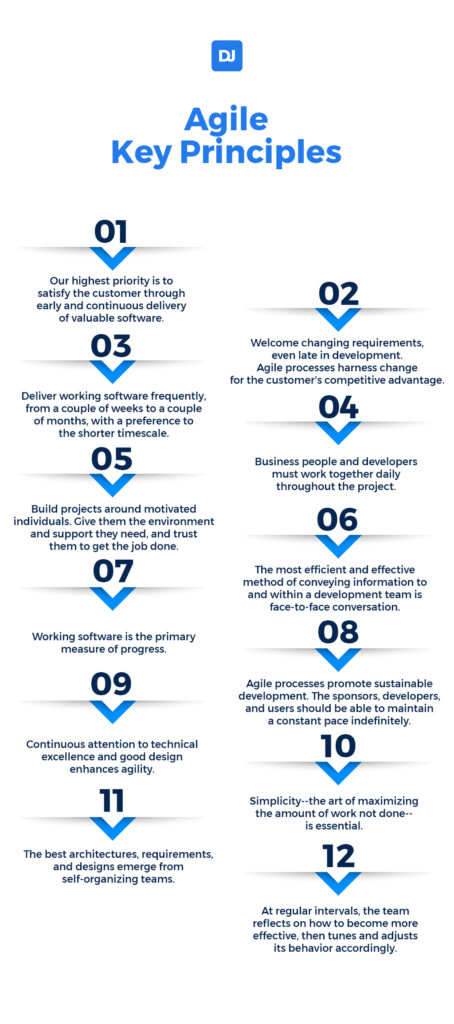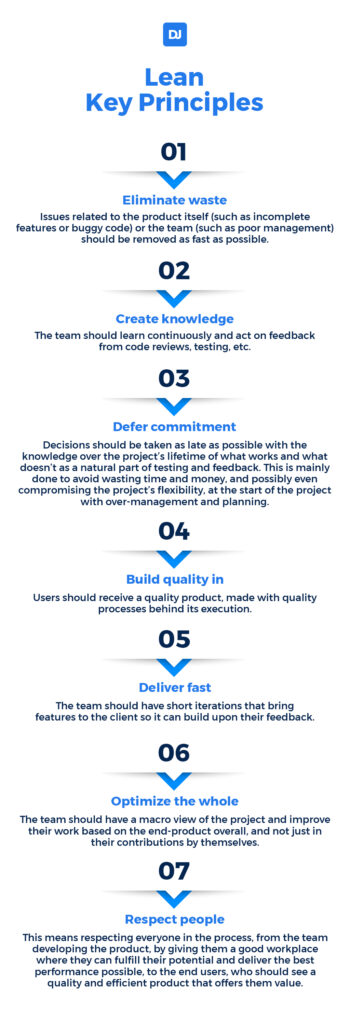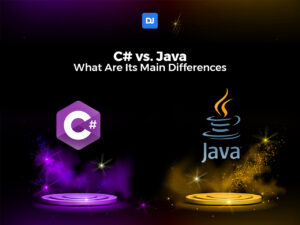If you’ve ever researched contemporary project management techniques, you’ve probably come across terms like Lean and Agile. While these 2 methods are frequently utilized together, they are different project management techniques.
What is the difference between Lean and Agile or their similarities? How to know when to use one or the other? We’ve got you covered!
Agile vs Lean: A Quick History
1. Agile
Traditional methods like the Waterfall method were used to manage software development projects by computer programmers in the 1980s. However, this method was time-consuming and expensive. To address this, the Agile Manifesto was created.
Agile teams can structure and adapt better to change by involving stakeholders from the start. This way, there’s improved software planning, development, and rollout.
2. Lean
In the 1970s, Taiichi Ohno created a method called the Toyota Production System (TPS). The aim was to decrease inventory prices and enhance supply chain efficiency by eliminating any kind of waste. This method was subsequently used to develop Lean manufacturing ideas.
Let’s have a closer look at what the Lean and Agile methodologies are.
Agile Methodology and Development
The Agile software development method is a way to create projects using an iterative technique.
Agile project management involves dividing a large development cycle project into shorter ones known as sprints. The typical sprint lasts 2-4 weeks. At defined points (usually at the end of a sprint), feedback and/or improvements are suggested and taken into account on the following sprints, in a continuous improvement cycle.
The previously mentioned Agile Manifesto took a step to uniformize the Agile methodology by introducing 12 key principles:

- Our highest priority is to satisfy the customer through early and continuous delivery of valuable software.
- Welcome changing requirements, even late in development. Agile processes harness change for the customer’s competitive advantage.
- Deliver working software frequently, from a couple of weeks to a couple of months, with a preference for the shorter timescale.
- Business people and developers must work together daily throughout the project.
- Build projects around motivated individuals. Give them the environment and support they need, and trust them to get the job done.
- The most efficient and effective method of conveying information to and within a development team is face-to-face conversation.
- Working software is the primary measure of progress.
- Agile processes promote sustainable development. The sponsors, developers, and users should be able to maintain a constant pace indefinitely.
- Continuous attention to technical excellence and good design enhances agility.
- Simplicity–the art of maximizing the amount of work not done–is essential.
- The best architectures, requirements, and designs emerge from self-organizing teams.
- At regular intervals, the team reflects on how to become more effective, then tunes and adjusts its behavior accordingly.
New collaborative Agile developments, like the RAD model, prioritize speed and collaboration. Now, customers are actively involved. At the end of each sprint, they provide comments, and the appropriate modifications are made in the following cycle.
To create a product that meets your clients’ demands perfectly, you must embrace continuous improvement.
Lean Methodology and Development
Lean methodology aims to improve the development process by eliminating waste. In this instance, “waste” is defined as everything that does not contribute to the process’s worth, such as inefficient methods or unnecessary documentation. It also endeavours to maximize client value while lowering risk.
While Lean started out as a manufacturing methodology, it was quickly adapted to other types of product management, such as software development.
The 7 key principles of Lean project management are:

- Eliminate waste: Issues related to the product itself (such as incomplete features or buggy code) or the team (such as poor management) should be removed as fast as possible.
- Create knowledge: The team should learn continuously and act on feedback from code reviews, testing, etc.
- Defer commitment: Decisions should be taken as late as possible with the knowledge over the project’s lifetime of what works and what doesn’t as a natural part of testing and feedback. This is mainly done to avoid wasting time and money, and possibly even compromising the project’s flexibility, at the start of the project with over-management and planning.
- Build quality in: Users should receive a quality product, made with quality processes behind its execution.
- Deliver fast: The team should have short iterations that bring features to the client so it can build upon their feedback.
- Optimize the whole: The team should have a macro view of the project and improve their work based on the end-product overall, and not just in their contributions by themselves.
- Respect people: This means respecting everyone in the process, from the team developing the product, by giving them a good workplace where they can fulfill their potential and deliver the best performance possible, to the end users, who should see a quality and efficient product that offers them value.
6 Major Differences Between Lean vs Agile
1. Methodology
The most significant difference between Agile methodologies and Lean thinking is that Agile focuses on continuous improvement and not the elimination of waste as Lean.
Agile development places a premium on continuous improvement and client satisfaction. The Agile approach entails an iterative development process (sprints) and the active involvement of the client from start to conclusion by the Agile team.
Lean Methodology is all about reducing risk and eliminating waste (lean production). As you get rid of everything that doesn’t help the project reach its ultimate goal, the production process automatically shrinks and improves efficiency.
2. Approach
Both Lean and Agile development approach software creation slightly differently.
In an Agile setting, a project is built in short iterative and incremental cycles or sprints. The iterative and incremental development is a method of breaking down a project into phases, with each phase consisting of planning, implementation, testing, and evaluation. This is done one step at a time until you reach your desired result.
The Lean approach seeks to improve efficiency by making minor, continuous changes throughout the manufacturing process. This can lead to shorter development cycles, but it is not the primary goal of Lean.
3. Project Timelines
While both Lean and Agile approaches aim to get the product out as quickly as possible, their time frames differ. Agile teams work in short cycles to complete projects more quickly. Cycles and sprints typically last for 2-4 weeks each.
Lean teams reduce the length of their project schedule by optimizing process flow. They typically restrict their work in processes, which cuts the overall project duration. But unlike Agile, there is no set deadline.
4. Team Structures
There are several differences between the Lean and Agile methodologies when it comes to team structures. An Agile team is made up of a small group of people who are:
- Self-organized: Teams determine how to accomplish the task on their own.
- Cross-functional: Collaborators have diverse responsibilities and skills, but they all strive for the same objective.
A team may be made up of a product manager, a Scrum Master or Agile coach, a product owner, a business analyst, and so on.
In the Lean methodology, you create numerous Lean teams made up of personnel from various relevant departments. Each group is led by a team leader who oversees the team and individual projects. While your Lean team members should be capable, they don’t always have to be self-managed and cross-functional.
5. Overall Goal
Agile and Lean development approaches aim to achieve varying objectives.
The goal of Agile development is to create something that fulfills the end-user or stakeholder needs.
The goal of Lean development is to eliminate any process that does not contribute valuably to the creation of the product.
6. Area of Focus
The focus of Agile and Lean methodologies are very different.
Agile development is all about the project’s scope and client value. A software product’s scope is defined by its features and capabilities in Agile software development. At the end of each sprint, you prioritize customer value and make adjustments in the following cycle.
Lean software development, on the other hand, is all about improving process efficiency and quality. Process improvement and quality are emphasized, with clear focus on having no defects. This is typically achieved through a process called value stream mapping, which visualizes a series of events between product development and delivery to the client.
Agile vs Lean: What Are the Similarities?
Agile and Lean methodologies are frequently linked because both approaches share values such as adaptability, which makes them similar.
Let’s go over the main common features and values between Lean and Agile:
Continuous Improvement
Both methodologies concentrate on inspecting the current working method for potential positive modifications. The Continuous Improvement Lifecycle can be customized depending on the product but usually revolves around a few key stages:
- Requirements Gathering & Conceptualization: The step where the team checks which problems should be solved in a sprint and determines how to solve them on a macro level.
- Development: The team takes the tasks that were chosen for the specific sprint and tackles them based on the established architecture and designs proposed during conceptualization.
- Testing: After development is complete, the new features are tested against specific parameters set out by design to establish whether the implementation meets all the requirements.
- Deployment: After the tests are successful and the new feature is deemed complete, it is added to the main product.
- Maintenance: After being deployed, the project should be monitored in order to check for inconsistencies or problems introduced by new features to be solved in future sprints.
Customer Value Prioritization
Both Agile and Lean focus on providing more value to the customer through their proactive engagement of consumer comments or their attention to quality.
Efficient Timelines
The Agile approach delivers items in rapid version updates, whereas Lean project management aims for the fewest number of phases feasible. Both of these strategies are focused on keeping the process running smoothly.
The Continuous Flow of Results
The Agile method continually provides value at every stage while Lean keeps delivering results without waste elimination through continuous reduction of waste.
Agile vs Lean Comparison Table
| Aspect of Comparison | Agile | Lean |
| Focus of the methodolody | Agile project management focuses on continuous improvement. | Lean project management focuses on the elimination of waste. |
| Customer Value | Agile methodology prioritizes customer value provision via continuous improvement. | Lean methodology prioritizes customer value provision via giving attention to product quality. |
| Methods for Fast Delivery | Agile teams work in short cycles to complete projects faster. | Lean teams ensure the elimination of unnecessary wasteful factors to quicken product delivery. |
| Continuous Improvement | The Agile methodology seeks to continuously improve the project by taking into consideration end-user and stakeholder feedback at every cycle. | The Lean methodology seeks to continuously improve the project by eliminating waste at every stage for a better use of resources. |
| End Goal | The goal of the Agile methodology is to produce a product that satisfies the end-user or stakeholder requirements. | The goal of the Lean methodology is to eliminate all factors that do not add value to the development of the product. |
Looking for an Agile or Lean Software Development Project Manager?
Project management methodologies like Agile or Lean are designed to streamline the development process by making it more attainable and understandable. With the aid of the Agile methodology, for example, you can inject stakeholder and end-user feedback into your development process for an outcome that satisfies everyone.
On the other hand, Lean project management enables you to make the best use of your resources by eliminating waste for a better quality product.
However, you can have the perfect methodology, but it’s all in vain without the right team. If you’re searching to hire a qualified developer for your Agile or Lean projects, we got you covered. Our global headhunting team can help you hire and evaluate remote developers in less than two weeks. Plus, we also help you with all the HR hassle, so you have nothing to worry about. Contact us, and let us help you scale your team.






